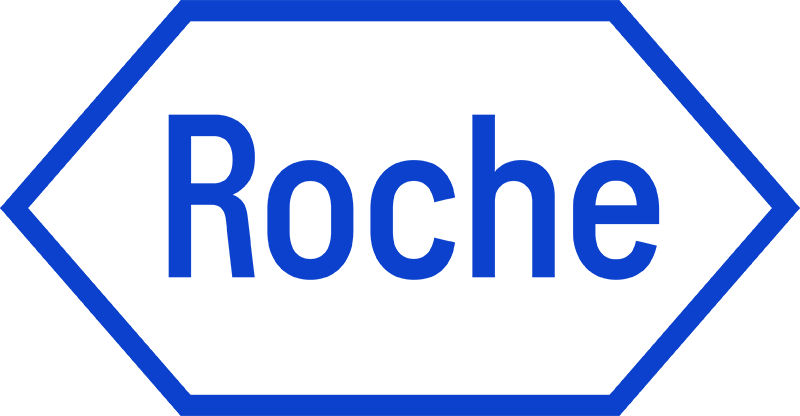Elecsys® CA 125 II

A biomarker for the management of ovarian cancer patients
The Roche Elecsys® CA 125 II assay is a tumor marker test for use with blood samples to support monitoring and surveillance of ovarian cancer patients and together with Elecsys® HE4 for risk assessment of patients with pelvic mass with the ROMA™ algorithm
- CA 125 is found in a high percentage of ovarian tumors of epithelial origin1-2
- CA 125 is widely mentioned in international guidelines for use in pelvic mass evaluation and in therapy and recurrence monitoring of ovarian cancer3-5
- In addition, HE4 complements CA 125 in identifying patients with disease recurrence and disease progression6-8
A combined use of HE4 and CA 125 using ROMA (Risk of Ovarian Malignancy Algorithm) can increase the sensitivity and specificity for assessing the risk of ovarian cancer
Among women presenting with pelvic mass, a combined use of HE4 and CA 125 using ROMA (Risk of Ovarian Malignancy Algorithm) can increase the sensitivity and specificity for assessing the risk of ovarian cancer - even stages I/II ovarian cancer – as compared to testing CA 125 alone.9-11
- ROMA accurately identifies 94% of the patients with pelvic mass as having ovarian cancer9
- ROMA has a higher specificity than CA 125 alone: Among ten women with ovarian cancer, ROMA identifies one more patient than CA 125 alone (sensitivity: ROMA 90% vs. CA 125 79%)10
- ROMA has a higher sensitivity than CA 125 alone: Among ten women with benign gynecologic diseases, ROMA dismisses one more patient which CA 125 alone would include as having ovarian cancer (Specificity: ROMA 93% vs. CA 125 86%)10
- ROMA has a higher sensitivity and specificity in detecting stages I/II ovarian cancer than CA 125 alone11
Determining HE4 and CA 125 independently can improve ovarian cancer monitoring
- Either HE4 or CA 125 levels can be elevated in patients during therapy monitoring and recurrence monitoring6-8
- At disease progression, some patients show an elevated HE4 level earlier than an increase in CA 125 level, and others show an elevated CA 125 level earlier than an increase in HE4 level. Therefore, HE4 and CA 125 together can effectively monitor therapy response6-8
- As patients with elevated CA 125 level at diagnosis can switch to elevated HE4 level at follow up, and vice versa, testing for both HE4 and CA 125 can identify patients with recurrent disease that CA 125 alone would miss8
Efficiency and reliability for the laboratory12
- Shows precision across the entire measuring range for reliable results
- Uses a low sample volume (20 μl cobas e 411, cobas e 601 and cobas e 602 and 12 μl on cobas e 402, cobas e 801)
- Is fast with 18 minute assay time
- Is available for use in both serum and plasma

Risk of Ovarian Malignancy Algorithm (ROMA)
The algorithm uses CA 125 value, HE4 value and menopausal status as an aid in estimating the risk of epithelial ovarian cancer in premenopausal and postmenopausal women presenting with pelvic mass.10,12
ROMA™ calculates a predictive probability of finding epithelial ovarian cancer on surgery.10,12

| Pelvic mass evaluation: Risk of Ovarian Malignancy Algorithm (ROMA)10 | |||
| Pre-menopausal ▼ |
Post-menopausal ▼ |
||
| PI = - 12.0 + 2.38*LN[HE4] + 0.0626*LN[CA 125] | PI = -8.09 + 1.04*LN[HE4] + 0.732*LN[CA 125] | ||
| ▼ |
▼ |
||
| ROMA* index [%] = exp(PI) / [1 + exp(PI)] *100 | |||
| ▼ |
▼ |
||
| < 11.4% | ≥ 11.4 % |
< 29.9 % | ≥ 29.9 % |
| low risk | high risk | low risk | high risk |

*Human samples only
Note: Approved Intended Use of the assay may vary in different countries. For specific country approved use, please consult your local Package Insert
References
- Bast RC, et al. A radioimmunoassay using a monoclonal antibody to monitor the course of epithelial ovarian cancer. N Engl J Med. 1983;309:883-887.
- Klug TL, et al. Monoclonal antibody immunoradiometric assay for an antigenic determinant (CA 125) associated with human epithelial ovarian carcinomas. Cancer Res. 1984;44:1048-1053.
- NCCN Clinical Practice Guidelines in Oncology. Ovarian Cancer Including Fallopian Tube Cancer and Primary Peritoneal Cancer Version 3.2022.
- NICE (National Institute for Health and Clinical Excellence) Clinical Guideline: Ovarian Cancer: The Recognition and Initial Management of Ovarian Cancer, issued April 2011. NICE Clinical Guideline 122.
- Ledermann JA, et al. Newly diagnosed and relapsed epithelial ovarian carcinoma: ESMO Clinical Practice Guidelines for diagnosis, treatment and follow-up. Ann Oncol. 2013;24:24-32.
- Schummer M, et al. Evaluation of ovarian cancer remission markers HE4, MMP7 and Mesothelin by comparison to the established marker CA125. Gynecol Oncol. 2012;125:65-9.
- Allard J, et al. Use of a novel biomarker HE4 for monitoring patients with epithelial ovarian cancer. J Clin Oncol. 2008;26:15_suppl, 5535.
- Plotti F, et al. Does HE4 have a role as biomarker in the recurrence of ovarian cancer?. Tumor Biol. 2012;33:2117-2123.
- Moore RG, et al. Evaluation of the diagnostic accuracy of the risk of ovarian malignancy algorithm in women with a pelvic mass. Obstet Gynecol. 2011;118:280-288.
- Ortiz Muñoz B, et al. HE4, Ca125 and ROMA algorithm for differential diagnosis between benign gynaecological diseases and ovarian cancer. Tumour Biol. 2014;35:7249-58.
- Karlsen MA, et al. Evaluation of HE4, CA125, risk of ovarian malignancy algorithm (ROMA) and risk of malignancy index (RMI) as diagnostic tools of epithelial ovarian cancer in patients with a pelvic mass. Gynecol Oncol. 2012;127:379-83.
- Elecsys® CA 125 II Method Sheet for material #11776223190 V5 for cobas e 411, cobas e 601 & cobas e 602 #11776223214 V5 for cobas e 411, cobas e 601 & cobas e 602 #07026986190 V8 for cobas e 402 & cobas e 801 #07026986214 V8 for cobas e 402 & cobas e 801.

